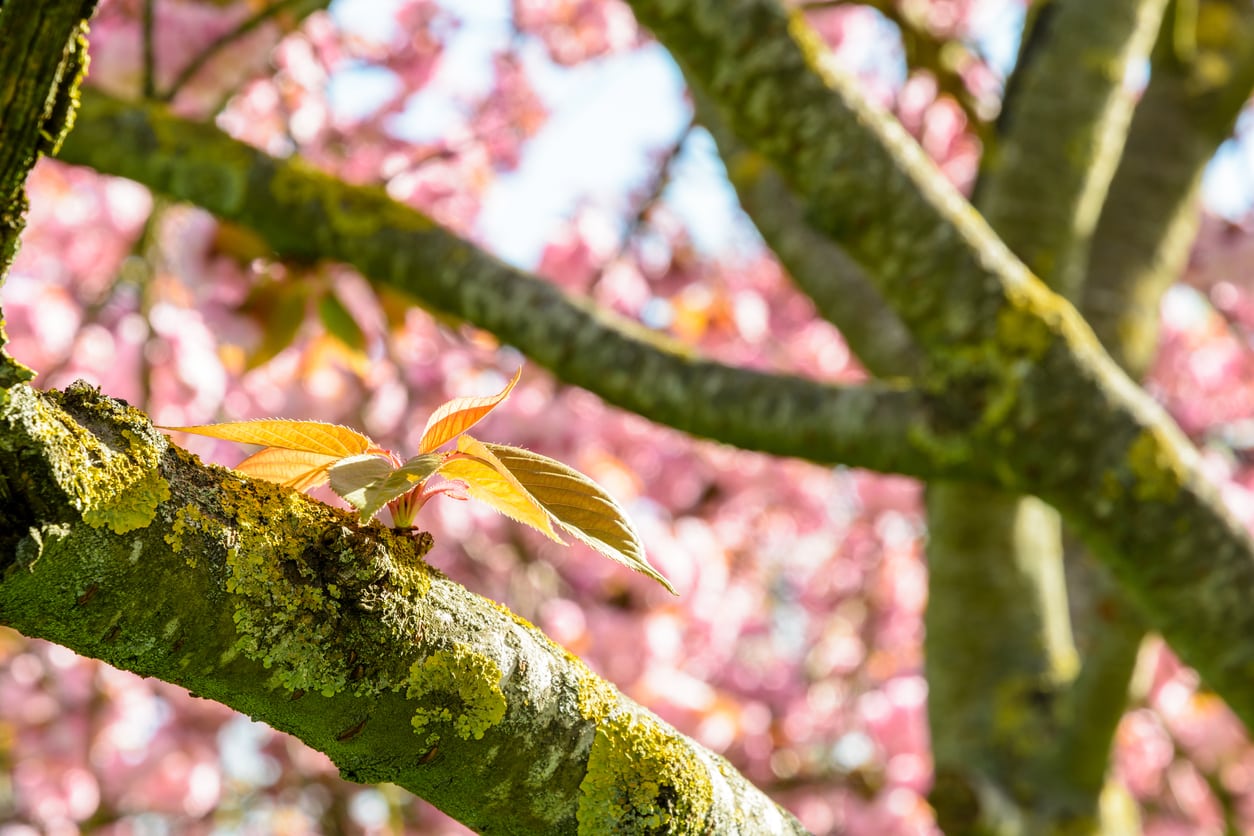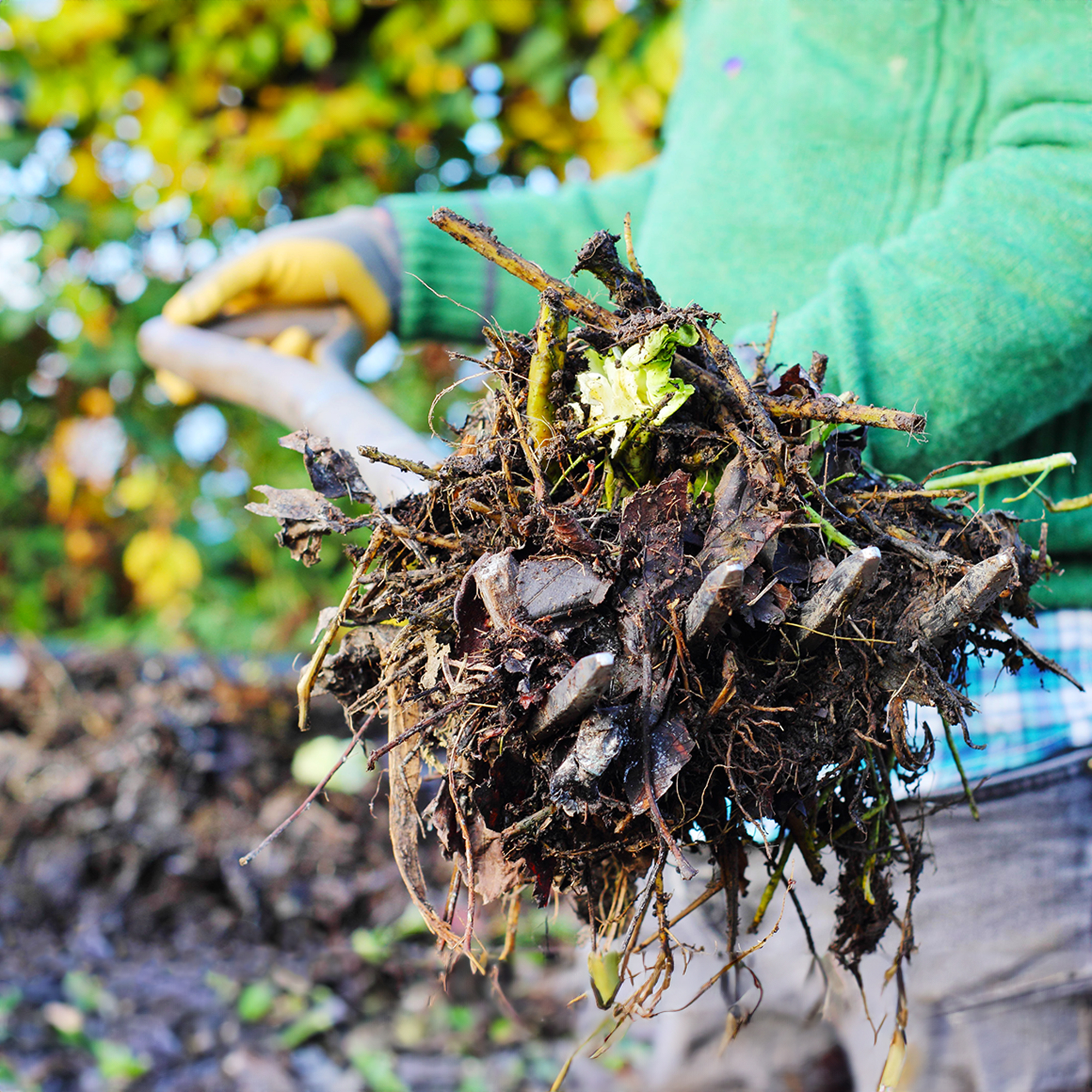Fruit Tree Lichen And Moss – Is Moss On A Fruit Tree Bad


It is not uncommon to find lichen and moss on fruit trees. They may both be in evidence or just one or the other, but is it a problem? Lichens are an indicator of low air pollution, so they are good in that way. Moss grows on the north side of trees in moist regions. Lichen also prefers moisture but they are a different organism altogether. Over time, they will contribute to reduced tree vigor. Continue reading to see what you can do about fruit tree moss or lichen on your plants.
About Moss and Lichen on Fruit Trees
Lichen and mosses on trees conjure up romantic images of oaks in Louisiana covered in lacy nets of the stuff. While they both give trees a bit of character, do they actually harm them? Fruit tree lichen is most common in rural areas where the air is clear. Moss on a fruit tree can occur anywhere, provided temperatures are mild and there is plentiful moisture. Both conditions can be found across much of North America.
Moss
There are many types of mosses. They are small plants that grow in clusters in damp, shady locations. For this reason, they often occur on the north side of a tree but they can also grow on any other side in shade. Although tiny, they are vascular plants with the ability to glean moisture and nutrients, primarily out of the air.
Fruit tree moss may be green, yellow, or any color between. It may also have a dense or loose texture, and be soft or coarse. Moss on a fruit tree has no adverse effect on the plant. It is simply utilizing the tree's shady branches as a nice living space.
Lichen
Lichens are different from mosses, although they may tend to have similar appearances. Lichen is found on the branches and stems of fruit trees. They may look like crusty patches, hanging growths, upright forms, or even leafy mats. The colonies will enlarge over time, so older plants have larger patches of lichen.
Fruit tree lichen also occurs on plants that are low in vigor and may be an indicator that an older tree is nearing the end of its life. Lichens are a combination of a fungi and blue-green algae, which live and work together to harness the needs of the organism. They do not take anything from the tree but are a good indicator of several factors.
Combating Lichen and Moss on Fruit Trees
Although neither adversely affects trees, if you don't like the appearance of lichen or moss on your trees, you can control them to some extent. In orchards with regular copper fungicide applications, neither organism occurs very frequently. Lichens and moss can be minimized by pruning the interior canopy to let in light and air. Removing close vegetation around the trees can also help, as does good cultural care for a healthier tree.
Gardening tips, videos, info and more delivered right to your inbox!
Sign up for the Gardening Know How newsletter today and receive a free copy of our e-book "How to Grow Delicious Tomatoes".
You can also manually remove the larger moss plants on stems and limbs. Lichen is a bit more resistant to removal, but some can be rubbed off without damaging the tree. In most cases, neither lichen on fruit tree nor moss will cause any harm to a well-cared-for fruit tree and should just be enjoyed.

Bonnie Grant is a professional landscaper with a Certification in Urban Gardening. She has been gardening and writing for 15 years. A former professional chef, she has a passion for edible landscaping.
-
 Grow ‘Karl Rosenfield’ Peony Plants For The Ultimate Frilly Border Beauties And Cut Flowers
Grow ‘Karl Rosenfield’ Peony Plants For The Ultimate Frilly Border Beauties And Cut FlowersFor frilly double magenta peony petals infused with a heady fragrance, grow ‘Karl Rosenfield’ peony plants. Here’s how to cultivate the ultimate plushy blooms
By Tonya Barnett
-
 10 Common Composting Problems That Can Spoil Your Garden Gold – Plus Easy Fixes
10 Common Composting Problems That Can Spoil Your Garden Gold – Plus Easy FixesLearn how to troubleshoot common composting issues before they ruin your stash – from bad smells and bugs to materials not breaking down as they should.
By Susan Albert
-
 How To Protect Fruit Trees From Frost And Freeze
How To Protect Fruit Trees From Frost And FreezeChoosing fruit trees appropriate for your growing zone is best, but you still may need to protect them from extreme cold. Read how.
By Bonnie L. Grant
-
 Best Plants For Late Summer and Fall Fruit Harvest
Best Plants For Late Summer and Fall Fruit HarvestEven if you don’t have the optimal conditions for more common fruit trees, there are other end of summer fruits to enjoy.
By Teo Spengler
-
 Best Native Fruit Trees To Support Wildlife
Best Native Fruit Trees To Support WildlifeIf you want trees that will attract and feed wildlife, learn the best kinds of edible fruit and nut trees to plant for inviting specific creatures.
By Teo Spengler
-
 Orange Fruit Varieties: Growing Fruits That Are Orange
Orange Fruit Varieties: Growing Fruits That Are OrangeOrange colored fruit isn’t limited to the citrus orange. There are plenty of other orange colored fruit varieties, each packing a healthful punch. Read on for more.
By Amy Grant
-
 Everbearing Plants: Learn About Everbearing Varieties Of Fruit
Everbearing Plants: Learn About Everbearing Varieties Of FruitWhat does everbearing mean? And more importantly, how do everbearing varieties differ from non-everbearing types? Read on for more.
By Laura Miller
-
 Plant A Red Fruit Garden: Growing Fruits With Red Flesh
Plant A Red Fruit Garden: Growing Fruits With Red FleshPlanting a red fruit garden may seem a bit whimsical. That is, until you realize the health benefits of consuming fruits with red flesh.
By Laura Miller
-
 Heat Tolerant Fruits - Growing Fruit In Hot Weather
Heat Tolerant Fruits - Growing Fruit In Hot WeatherSome fruit grows in extreme heat naturally. But there are also specially cultivated, heat-tolerant varieties. For more information on heat tolerant fruits, read on.
By Teo Spengler
-
 Yellow Fruit Varieties - Growing Fruit That Is Yellow
Yellow Fruit Varieties - Growing Fruit That Is YellowWhat fruit is yellow? There's more than the bananas at the supermarket. Try growing yellow fruit for a consistent supply of sunny food.
By Bonnie L. Grant